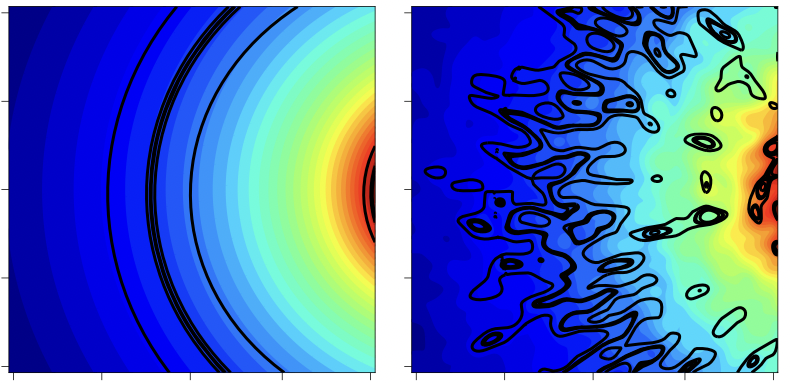
Decades after it became clear that the visible Universe is built on a framework of dark matter, we still don't know what dark matter actually is. On large scales, a variety of evidence points toward what are called WIMPs: weakly interacting massive particles. But there are a variety of details that are difficult to explain using WIMPs, and decades of searching for the particles have turned up nothing, leaving people open to the idea that something other than a WIMP comprises dark matter.
One of the many candidates is something called an axion, a force-carrying particle that was proposed to solve a problem in an unrelated area of physics. They're much lighter than WIMPs but have other properties that are consistent with dark matter, which has sustained low-level interest in them. Now, a new paper argues that there are features in a gravitational lens (largely the product of dark matter) that are best explained by axion-like properties.
Particle or wave?
So, what's an axion? On the simplest level, it's an extremely light particle with no spin that acts as a force carrier. They were originally proposed to ensure that quantum chromodynamics, which describes the behavior of the strong force that holds protons and neutrons together, doesn't break the conservation of charge parity. Enough work was done to make sure axions were compatible with other theoretical frameworks, and a few searches were done to try to detect them. But axions have mostly languished as one of a number of potential solutions to a problem that we haven't figured out how to resolve.
They have, however, attracted some attention as potential solutions to dark matter. But the behavior of dark matter was better explained by a heavy particle—specifically a weakly interacting massive particle. Axions were expected to be on the lighter side and could potentially be as light as the near-massless neutrino. The searches that were done for axions tended to rule out many of the heavier masses, as well, making the problem even more pronounced.
But axions may be making a comeback, or at least holding steady while WIMPs faceplant. There have been a number of detectors built to try to catch indications of the weak interactions of WIMPs, and they've come up empty. If WIMPs are Standard Model particles, we could have inferred their presence based on missing mass in particle colliders. No evidence of that has been forthcoming. That has caused people to reexamine whether WIMPs are the best solution to dark matter.
On cosmological scales, WIMPs continue to fit the data extremely well. But once you get down to the levels of individual galaxies, there are some oddities that don't work quite as well unless the dark matter halo surrounding a galaxy has a complicated structure. Similar things seem to be true when you try to map the dark matter of individual galaxies based on its ability to create a gravitational lens that warps space so that it magnifies and distorts background objects.

The new work attempts to relate these potential oddities to a difference between the properties of WIMPS and axions. As their name implies, WIMPs should behave like discrete particles, interacting almost entirely through gravity. By contrast, axions should interact with each other through quantum interference, creating wave-like patterns in their frequency throughout a galaxy. So, while the frequency of WIMPs should gently decline with distance from the core of a galaxy, axions should form a standing wave (technically, a soliton) that boosts their frequency near the galactic core. Farther out, complex interference patterns should create areas where there are essentially no axions and other areas where they're present at twice the average density.
Promoted Comments
Reader Comments (102)
View comments on forumLoading comments...